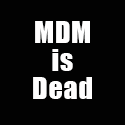
Meet Northrop Grumman’s Morgan Crafts, Director of Technology, Health IT, and Erik Buice, Vice President of Health Systems Management, Health IT, Information Systems. Crafts and Buice spoke with WashingtonExec about the upcoming 2012 National Predictive Modeling Summit and the National Recovery Audit Contracting (RAC) Summit being held Dec. 4-6, at the Mandarin Oriental Hotel in Washington, D.C. The symposium will be held concurrently.
Northrop Grumman’s Amy Caro, Vice President, Health IT Programs will be speaking at the RAC Summit on the “Use of predictive modeling to detect overpayments and abuse.” She will cover the Fraud Prevention System (FPS) developed and implemented by Northrop Grumman.

Crafts will address the “Application of Integrated Health Analytics in a Regulatory Environment” at the Predictive Modeling Summit, where he will discuss Northrop Grumman’s Health Analytics Platform. The platform is a new analytical decision support tool that increases understanding of the systematic impacts of diseases and health conditions to help leaders make cost-effective and informed health care policy decisions. Both sessions are on Dec. 5.
Additionally, Crafts and Buice talked to us about what makes predictive modeling so exciting today, how it’s used, how you can do more with less, and what both men are looking forward to the most about the Summit. Read on below for our interview with Morgan Crafts and Erik Buice.
WashingtonExec: Could you talk a little bit about the upcoming Summits being held December 4-6 and what the people attending have to look forward to?
Erik Buice: In the afternoon of the Predictive Modeling Summit we intend to share information about our work on analytics and fraud prevention as well as an integrated health analytics platform that Northrop Grumman has been developing internally to expand our expertise with fraud prevention.
Morgan Crafts: Fundamentally, Northrop Grumman already has contracts that are implementing state-of-the-art predictive mining capabilities. Over the past twenty years we’ve been implementing the infrastructure to collect, analyze and share electronic health data. In the past couple of years we’ve developed great tools for analyzing large data sets, from the national view, to the state view, to paying a provider, all the way to an individual patient. With all of this heterogeneous data we can begin to provide even better and more effective predictions. Since we have the whole platform across commercial entities and all of the federal, state & local organizations, we can truly leverage predictive modeling as a critical analysis solution.
WashingtonExec: Predictive modeling is nothing new. Why do you think it has really taken off over the last year or two?
Morgan Crafts: I think it is an exciting time for predictive modeling. It has moved from the area of research and academia and is now being put into practice. It is an exciting time to be looking at predictive modeling as a way to reduce expenditures in health and reduce cost increases in healthcare. Predictive modeling is absolutely one of the key elements to improving health outcomes while reducing costs.
The techniques have been around for years, and we’ve worked with them for decades – going back to regression and other techniques. What’s different now is that our customers have mostly siloed sets of information across all federal agencies. We are able to provide a common view to that data and then apply advanced analytic techniques to actually view the data. What people have known intuitively can now be validated. It’s no longer just a theory or research; today it’s about execution and translating that research capability into real world opportunities to impact patient care.
WashingtonExec: What are some practical examples?
Erik Buice: Together with CMS we’re using predictive analytics to detect aberrant billing patterns and other vulnerabilities. We run predictive algorithms against all Medicare Part A and Part B and durable medical equipment claims before the payment is made. We’re using predictive analytics in this sense to identify doctors and other providers who exhibit suspicious behavior or activity and we are helping CMS to identify Medicare fraud.
This is important because we’ve seen that by working together with them on the Fraud Prevention System that we are able to help CMS surgically remove fraudulent providers from the Medicare system without an adverse impact on hundreds of thousands of honest providers.
WashingtonExec: How do you see this technology contributing to the government’s motto of ‘doing more with less’?
Morgan Crafts: I think predictive modeling is fundamental to how we are going to reduce the cost of healthcare moving forward. We can see improvements in treatments by using early identification of the actual problems that are out there. This includes everything from prevention to diagnosis to treatment. By taking predictive modeling and applying it from high-level systems down to an individual, we will be able to improve health and use resources more wisely.
WashingtonExec: What are you particularly looking forward to at the summit?
Morgan Crafts: We’ve gone from talking about how predictive modeling could be used to address national and individual issues in the health industry and across government, to actually constructing and fielding solutions that are making a huge difference in the healthcare system. The attendees at the symposia will have the opportunity to participate in a research and development portfolio and look at lessons learned. We will bring all that information together to look at the different kinds of data sets, quality of data, and vastly different forms of data – all in one common view. We can provide the information to enable a decision maker or a clinician to use that data in a meaningful way so they can translate that information into providing the best possible care. We know that advanced analytics can drive the development of innovative health solutions that lead to better health outcomes.

Northrop Grumman’s Health IT focus areas include: Advanced Health & Science Solutions – Advancing the use of mobile applications and technology to provide key information to make an actionable change, faster. Benefit Systems Solutions – Championing benefit recipients in a way that facilitates transformational solutions tailored to their unique needs. Health Data Integration & Analytics – Serving as a collaborative resource for collecting, integrating, analyzing and sharing data and metrics on health issues. Population Health – Sustaining the essential functions of population health with reliable and responsive technologies.
Northrop Grumman is an industry leader in IT solutions and services supporting the global health community for more than 25 years with innovative health systems, advanced analytics and better health outcomes tailored to the challenges and demands of customers. Northrop Grumman debuted at No. 26 on the 2012 Healthcare Informatics 100 list. For more information, go to www.northropgrumman.com/health.


